
Little Free Library

We have all heard of food deserts, where in many urban and rural communities, the lack of nearby grocery stores creates a food vacuum. Ironically, the affected communities suffer from higher rates of obesity and diabetes.
What about literacy deserts?
Not only do they exist, but the desert is vast here in St. Louis. Our reading desert is compounded by the spectacular rise of digital media in society. Youth and teens are much more ready to jump on an ipad or xbox than open a book.
That’s where the Little Free Library comes in.
Little Free Libraries are the brain child of Todd Bol of Hudson, Wisconsin. “In 2009, Todd built a model of a one room schoolhouse as a tribute to his mother, a former school teacher who loved reading. He filled it with books and put it on a post in his front yard. His neighbors and friends loved it. He built several more and gave them away. Each one had a sign that said FREE BOOKS.”
Their mission is:
-
To promote literacy and the love of reading by building free book exchanges worldwide.
-
To build a sense of community as we share skills, creativity and wisdom across generations.
The concept of small, communal, free libraries took off. There are now over 25,000 Little Free Libraries throughout the world.
There are several Little Free Libraries in St. Louis and recently JEMA added one.
We entered a competition sponsored by the St. Louis Metropolitan Police Department, Space Architecture & Design and the Little Free Library organization.
We were inspired by LFL’s mission and also intrigued by the design challenge:
-
$100 budget (really!?)
-
20 book capacity minimum
-
Be able to withstand the natural elements
-
Be simple to construct
JEMA’s design takes into account all of these factors, but also addresses the how the library becomes integrated into the urban street-scape. Instead of being a structure supported by a post, JEMA’s Little Free Library is literally a POST.
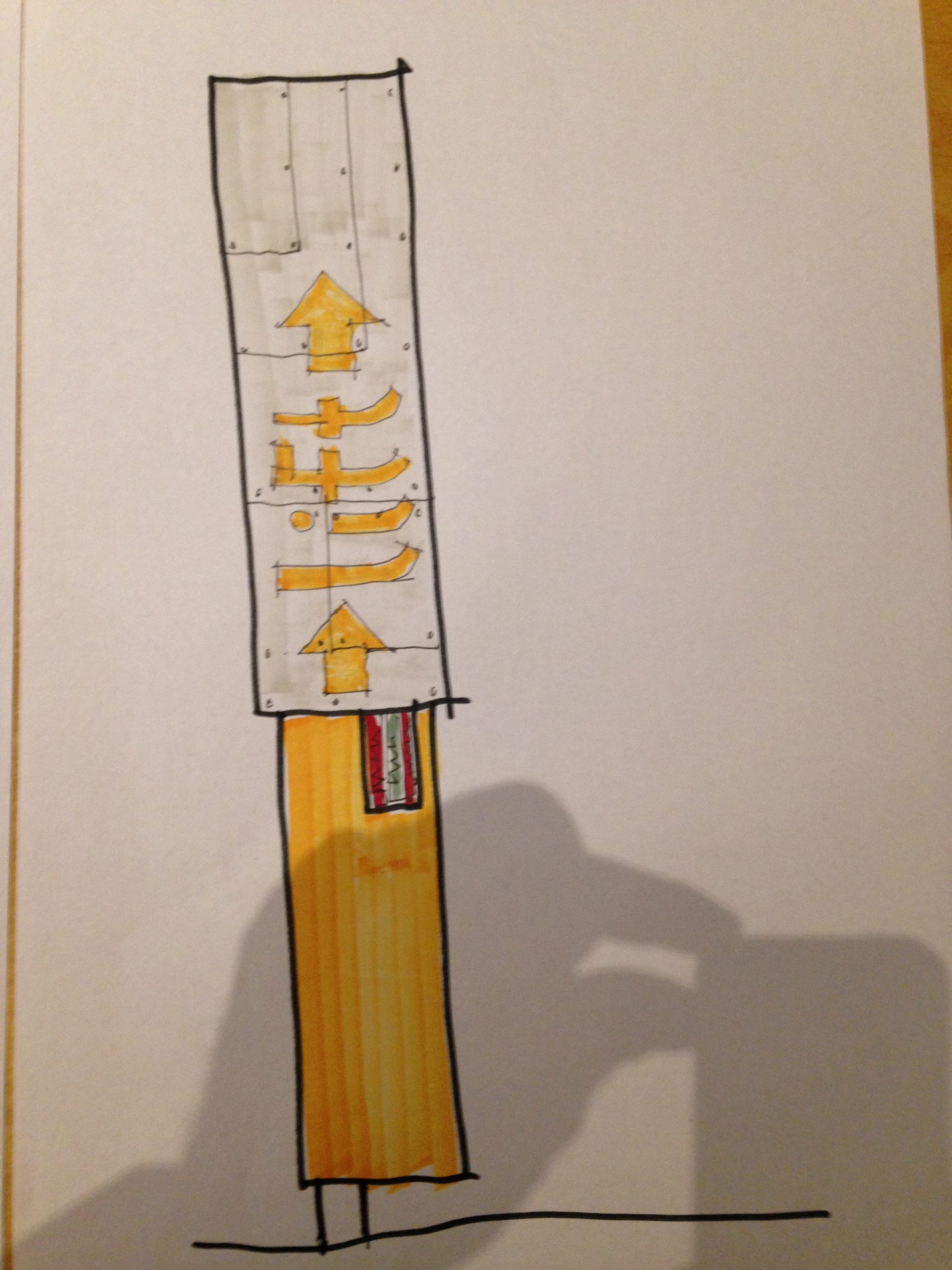
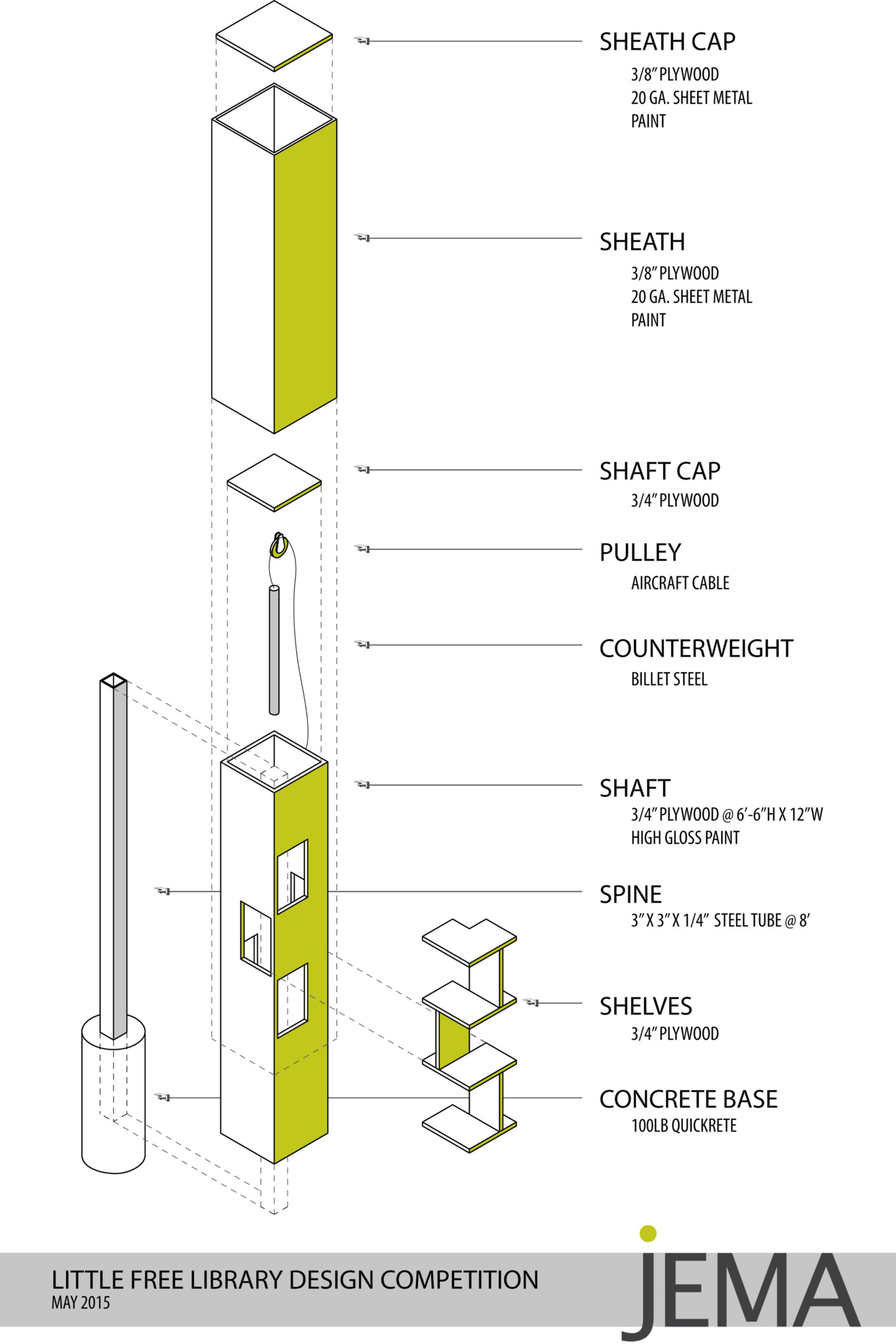
Like a street lamp, our LFL is a vertical family member of the urban street-scape.
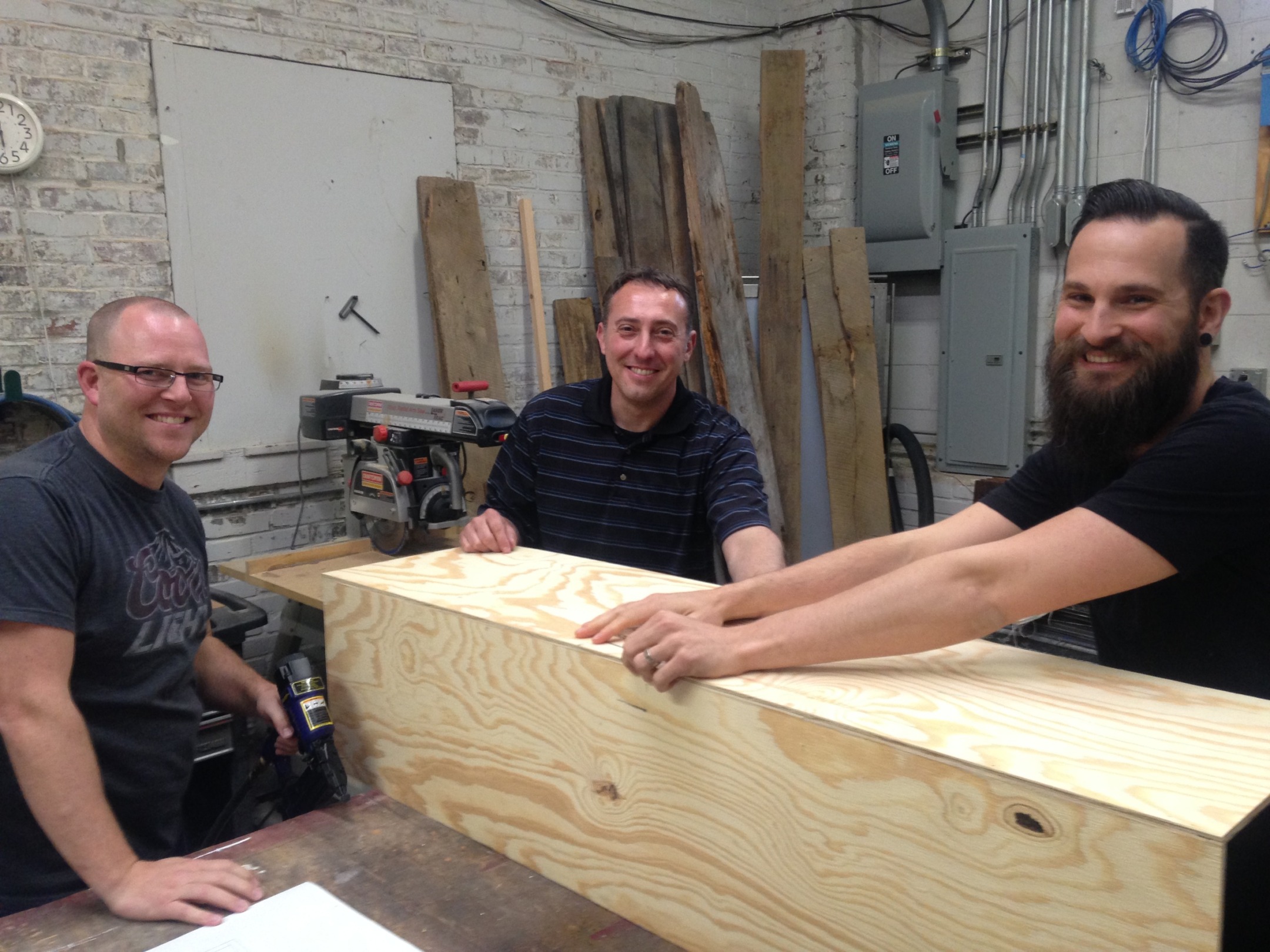
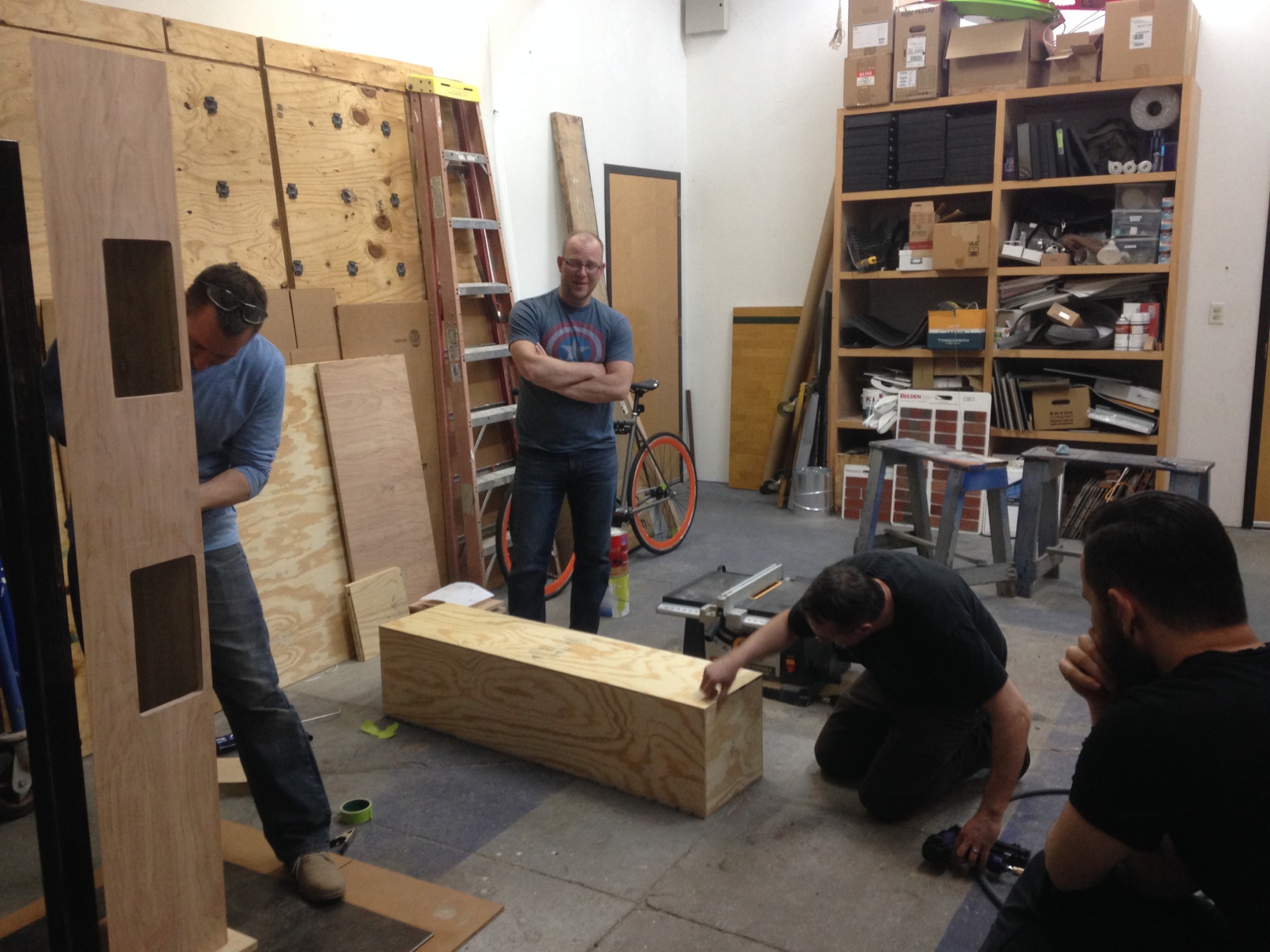

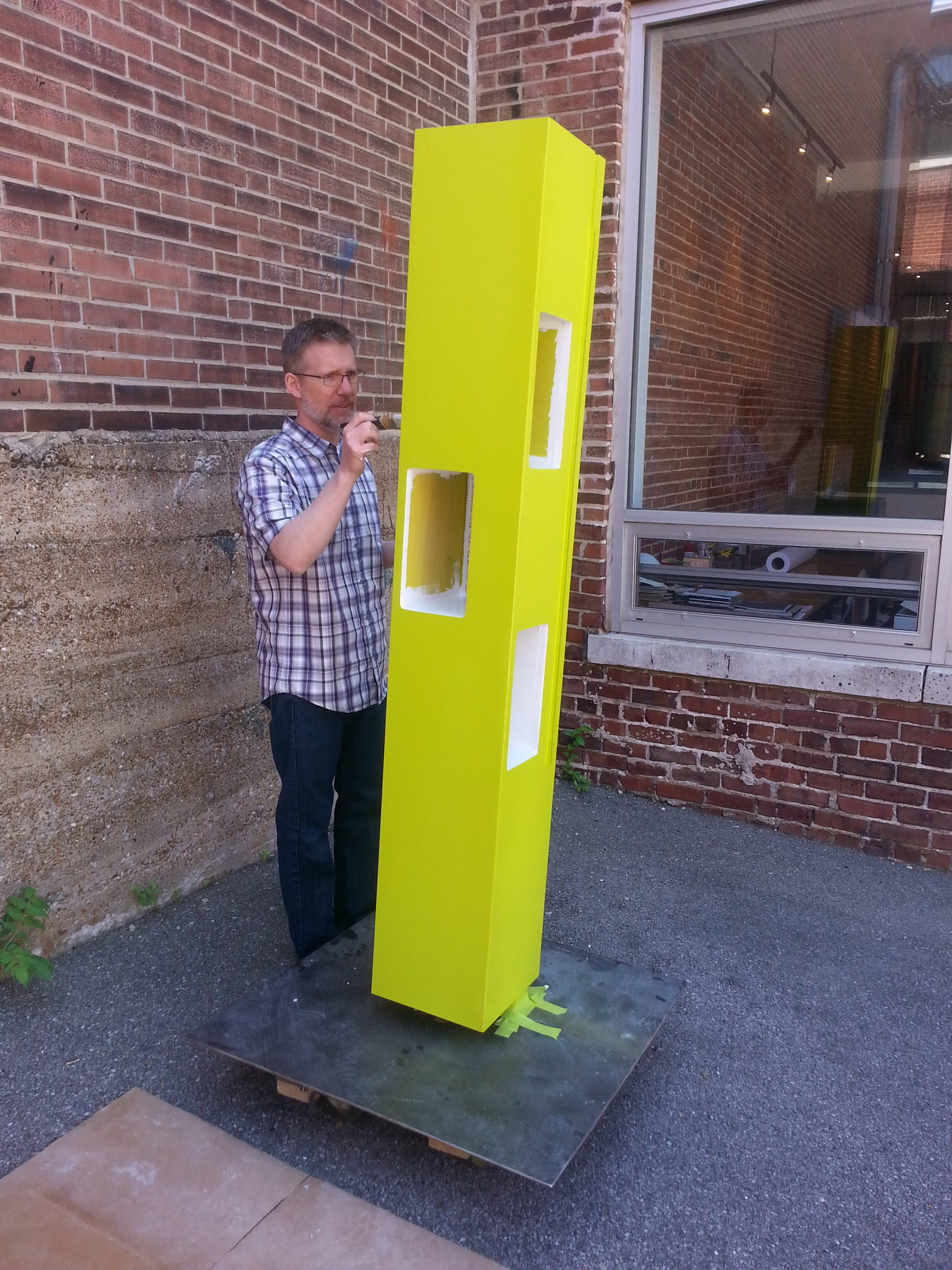
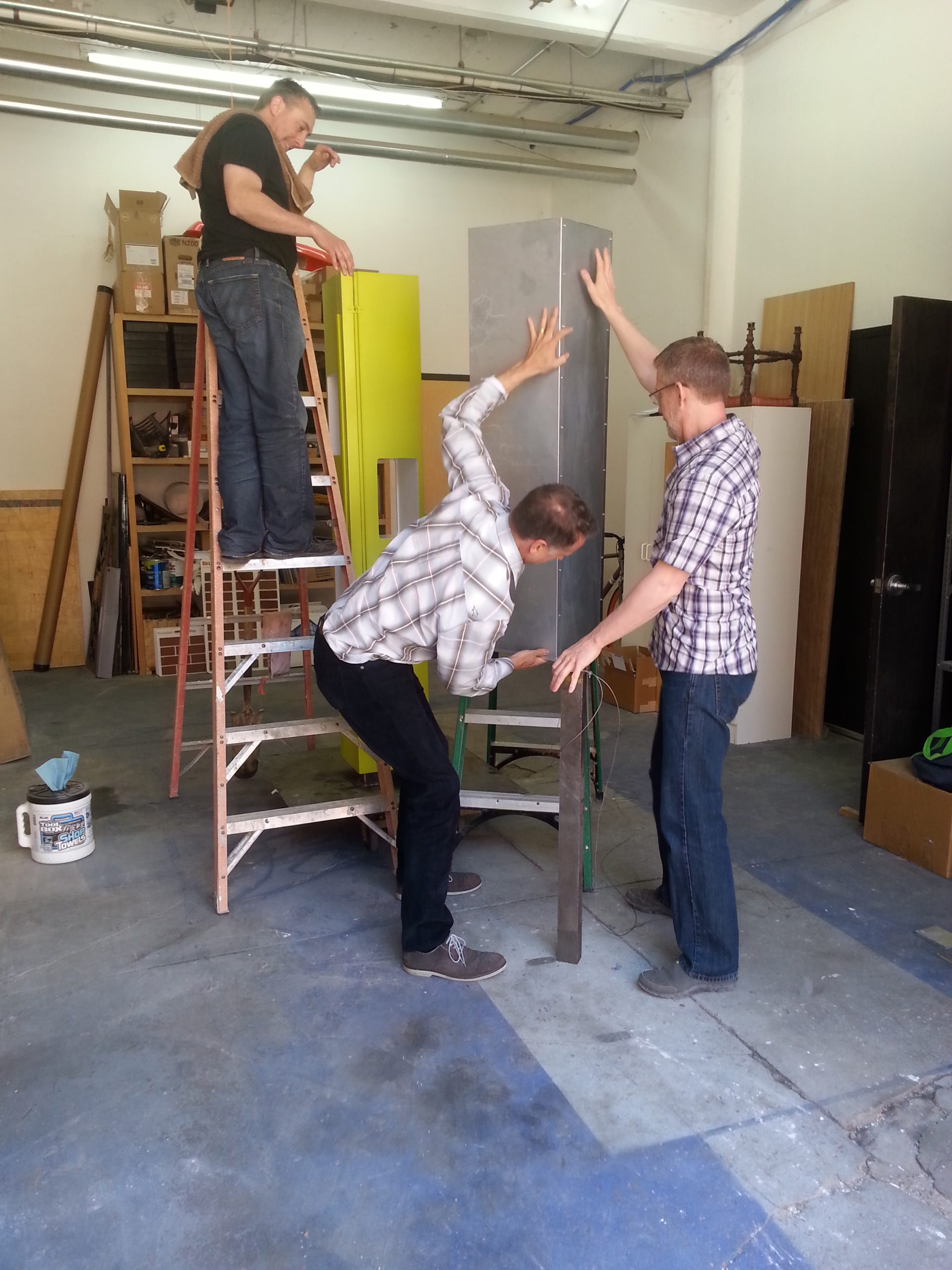
The design is clean, modern and has a bit of mystery. When first approached, no books are visible. The books are shrouded by a galvanized sleeve.
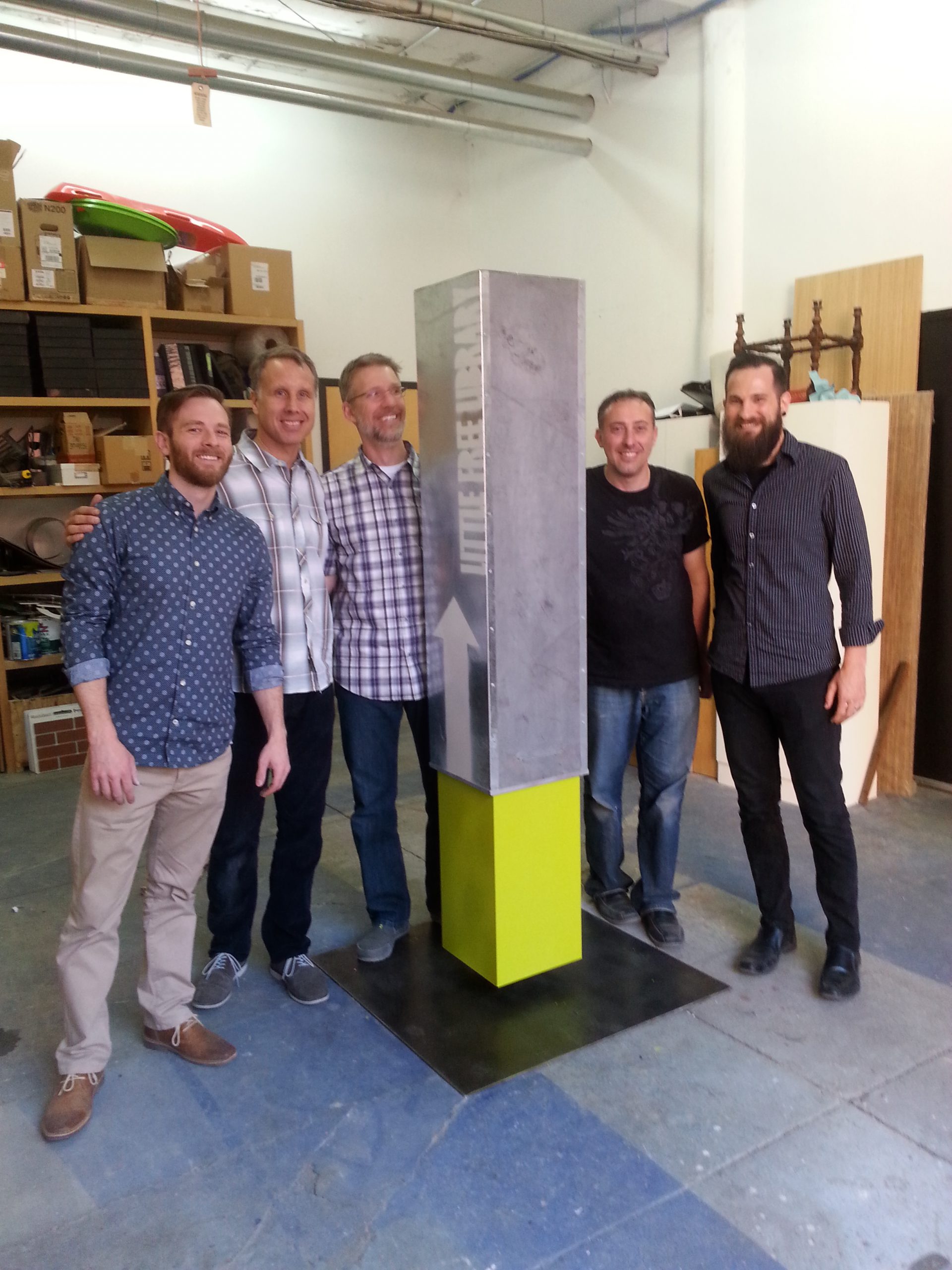

The sheath is balanced with a counter-weight (like an old double-hung window) that lifts up exposing 3 book shelves embedded in the supporting shaft. The stenciled graphic arrow gives it away: lift up, browse, take a book and lower the sheath back down…just like opening and closing a window.